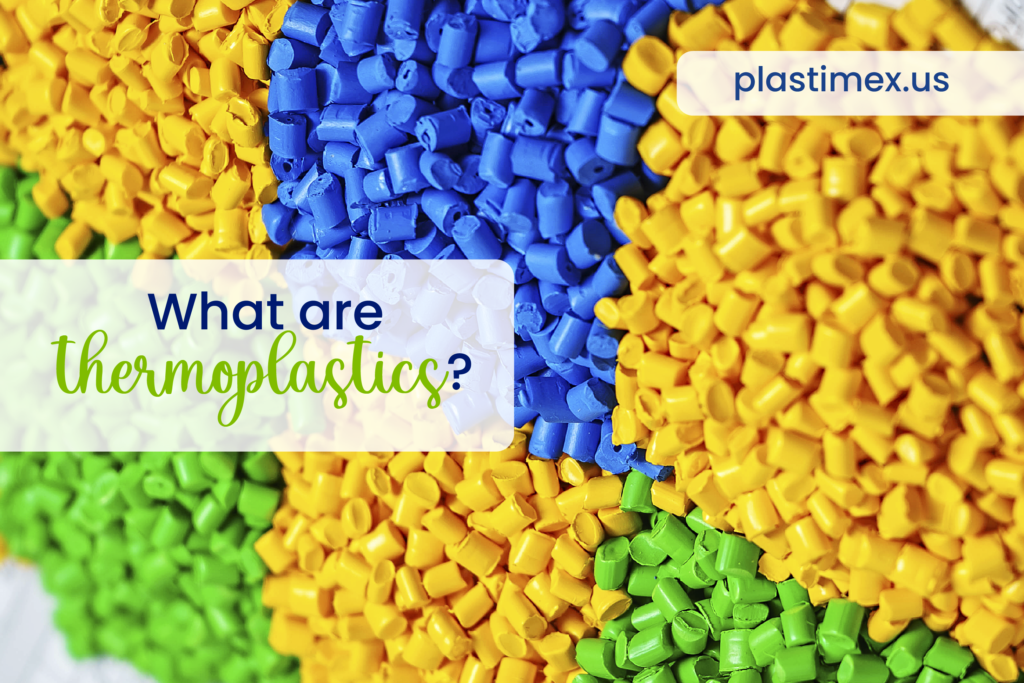Los polímeros se dividen en dos tipos: los termoplásticos que se caracterizan por ser flexibles o deformables a altas temperaturas, por lo que se pueden fundir y reformar varias veces para reciclar el plástico; y los termoestables que son materiales fáciles de moldear a temperaturas elevadas, sin embargo no se pueden fundir nuevamente porque se queman, haciendo que sea imposible volver incorporarlos a la cadena de producción. Por esta razón, en la industria los termoplásticos son una de las principales opciones cuando se busca un material resistente y reciclable. Conoce todo lo que necesitas saber sobre los termoplásticos.
¿Sabías que…?
Las materias primas que se emplean para producir el plástico son productos naturales como el carbón, gas natural, sal y petróleo. Además, gracias a sus distintas propiedades pueden moldearse y adaptarse con facilidad para crear envases, bolsas, ropa, electrodomésticos, juguetes, etc. Los plásticos se pueden dividir en dos grupos de acuerdo a sus características:
Termoestables: Para moldear este tipo de plásticos es indispensable someterlo a altas temperaturas. Las propiedades que ofrecen estos termoestables es su durabilidad, peso y calidad. Sin embargo, es importante mencionar que solo asumen una forma de manera permanente, lo cual imposibilita su reciclaje.
Termoplásticos Este grupo está compuesto por cadenas poliméricas lineales y ramificadas, por lo que al ser expuestas al calor pueden moldearse fácilmente. Una ventaja que ofrecen es que pueden reciclarse sin ningún inconveniente. Los termoplásticos más conocidos son: PEAD, PP, PET y PVC.
Diferencia entre termoplásticos y termoestables
Como se mencionó, la principal diferencia entre los termoplásticos y termoestables radica en su comportamiento ante las temperaturas elevadas. Mientras los polímeros termoplásticos se pueden volver a moldear y calentar cuantas veces sea necesario, los termoestables solo se pueden moldear una vez. Algunas de las principales diferencias son :
- Los termoestables tardan hasta 5 minutos en endurecerse, mientras que los termoplásticos 10 segundos.
- Los termoestables cuentan con elevada resistencia térmica y química, mientras que los termoplásticos alta resistencia y flexibilidad.
- Los termoestables no se ablandan a temperaturas elevadas, mientras que los termoplásticos se pueden calentar y moldear varias veces, facilitando su proceso de reciclaje.
Polímeros termoplásticos en Maxipet
Tereftalato de polietileno (PET): Mejor conocido como PET por su nombre en inglés (polyethylene terephthalate), es uno de los materiales más utilizados para fabricar envases y botellas de plástico. Este tipo de material se caracteriza por ser cristalino, ligero, flexible y muy resistente. Se trata de un polímero lineal que puede ser procesado de distintas maneras para una gran cantidad de usos debido a sus múltiples cualidades.
El polietileno de alta densidad (PEAD): Es un polímero termoplástico. Este tipo de material se obtiene por adición, esto significa que se suman distintas unidades de etileno para su composición. La rigidez y resistencia son sus principales ventajas. Se trata de un plástico resistente a los impactos, a la tracción y a distintas temperaturas. El PEAD ofrece a las distintas industrias la facilidad para imprimir, pintar y pegar sobre él, lo cual facilita la personalización de los productos.
¿Dónde adquirir envases de termoplásticos?
En Plastimex nuestra prioridad en todo momento es mantener un estándar de calidad alto en cada uno de nuestros envases. Gracias a nuestra maquinaria innovadora y personal en constante actualización, ofrecemos las mejores botellas y tapas para tu producto. Si quieres conocer más a detalle la variedad de envases de PET y PEAD con los que contamos contacta a un asesor para brindarte todos los detalles que requieres.

